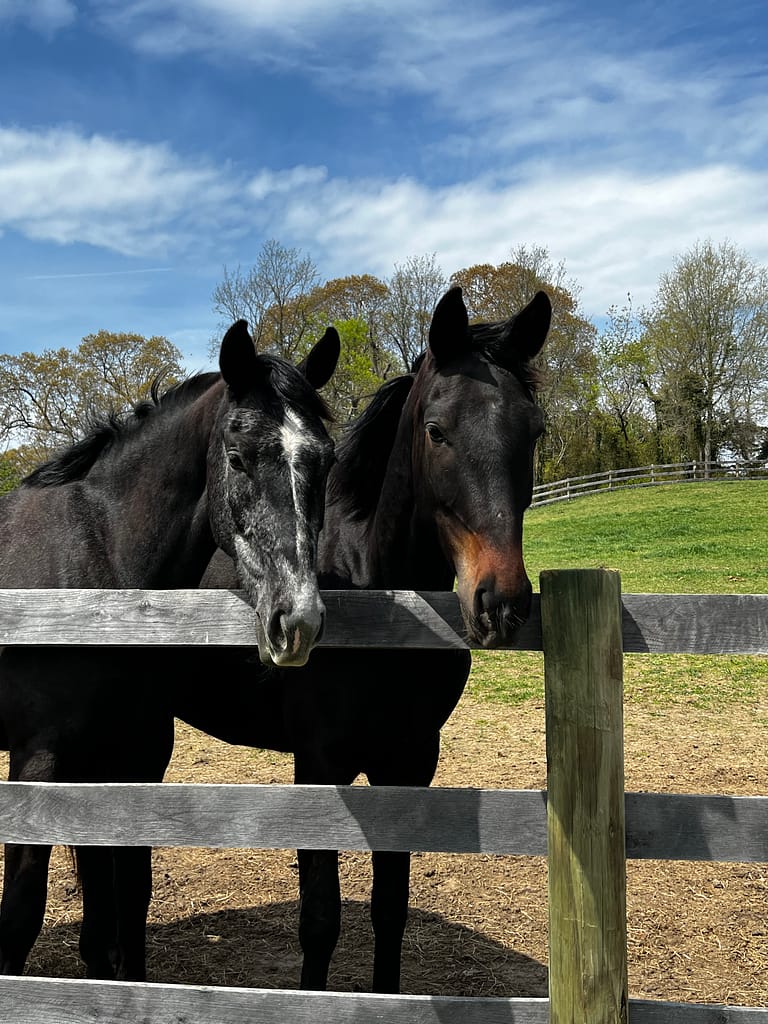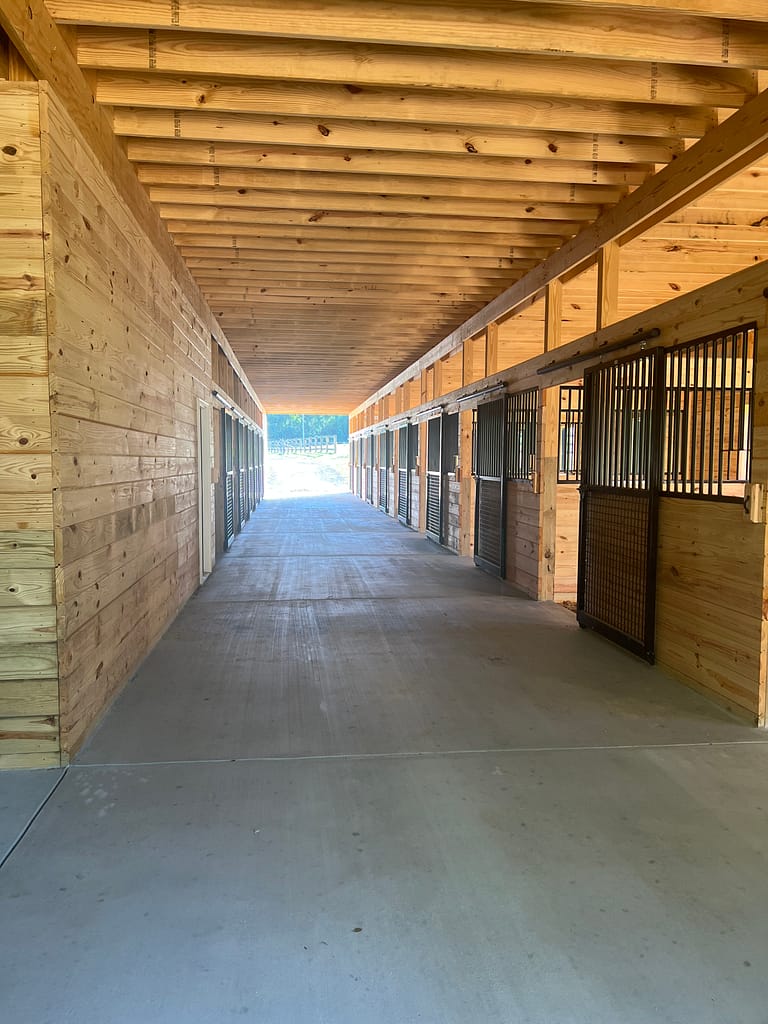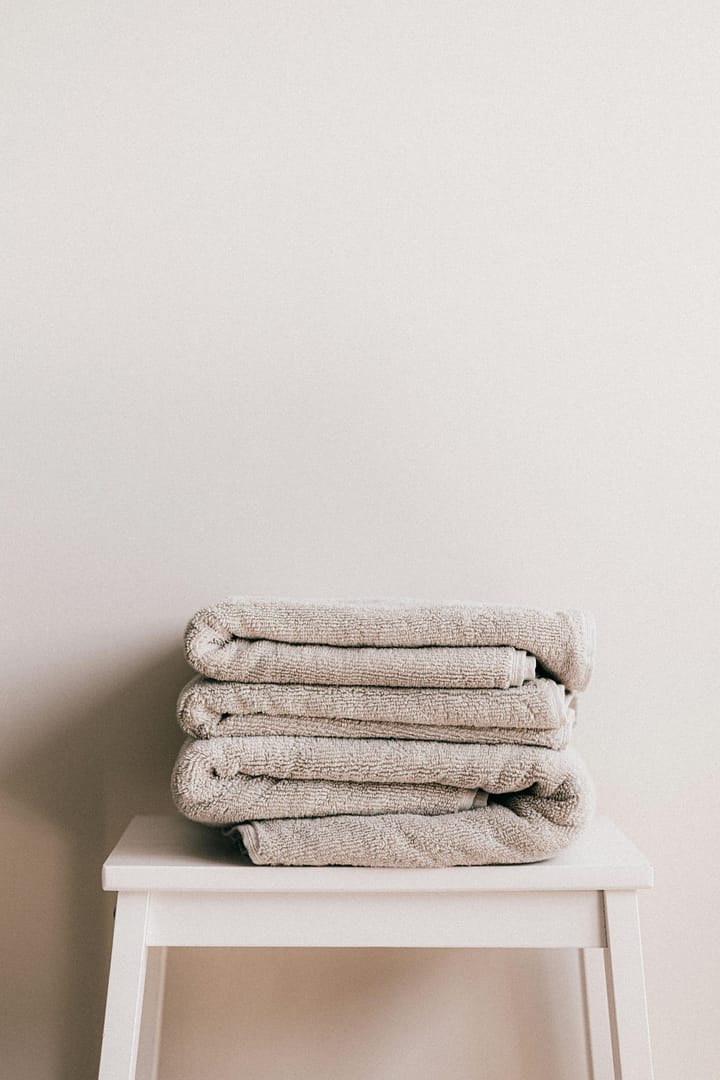How life events and horses are teaching me to regulate, retreat, and reimagine what home means in this season– summertime= nervous system regulation.
Three hot humid days, two horses bathed, and one wasp sting later summer is in full swing. I didn’t plan to spend this much of my life at the barn. I thought I’d buy a baby, be a boarder, and help out occasionally with feedings. But life has a way of rooting you in the most unexpected places. The farm where I board my horse is owned by a friend—a talented warmblood breeder—and when I bought one of her foals, I never left. The farm, along with the people and animals who live there, is now apart of who I am.
This place, these horses, have become part of my nervous system regulation. On nights when the air feels thick with humidity and fireflies, I’m reminded how much my body has changed through this quiet, repetitive, deeply sensory lifestyle. Even when I got stung by a wasp during evening feed (a sharp, shocking moment that still makes me flinch), I noticed how my body processed the stress: not with panic, but with presence.
Some of what I’ve learned here about health, slowness, and sensory living is changing the way I think about home—and how I care for myself in the summer season. Let me walk you through three lessons that might resonate, whether or not you spend your evenings in the company of horses.

1. Nervous System Regulation Starts in the Body, Not the Brain
When I first started boarding here, I was still unwinding from years of ICU nursing. I had normalized a constant level of stress and tension in my body—so much so that it didn’t even register as stress anymore.
But horses don’t operate on stress. They operate on energy. Horses reflect what’s happening in your body long before you notice it consciously. They force you to slow down, regulate your breath, and feel grounded before they’ll trust you. They won’t follow a person who’s disconnected from their own body—and over time, this taught me to reconnect with mine.
Holding tension and stress had become so much of who I was that I didn’t even realize I was scrunching my feet when I walked—until I sprained my ankle just leading Monty to his field. He was only a foal at the time, but he’s a rascal. His playfulness often ends in a “people are not toys” moment, but this one was on me. One careless step, foot curled tight with tension, and I spent four months nursing an injury that should’ve healed faster. Then again, it’s hard to heal when you’re speed-walking through long shifts and barely breathing between tasks.
That ankle sprain was more than a fluke. It cracked open a deeper truth: I was living in a body bracing for impact all the time. Around the same time, my blood pressure started creeping higher, despite all the right things on paper—exercise, hydration, good nutrition. The numbers didn’t lie: my nervous system was under constant strain. That injury, combined with my rising blood pressure, was the wake-up call I needed.
It triggered a storm of self-realization about how stress was showing up in my body, my job, and my home. It forced me to ask harder questions about my career in nursing and whether I could keep carrying that level of physical and emotional load. The answer came slowly, but clearly: something had to change.
- What sensory signals (tight jaw, racing heart, shallow breath) might be calling for your attention right now?
- Where in your daily routine could you build in a moment of physical grounding?
2. The Best Environments Reflect the Nervous System You Want to Have
I used to think home design was mostly about function and beauty. Now I think it’s about how a space helps with nervous system regulation.
At the barn, things aren’t styled—but they make sense. They have rhythm. There’s shade when you need it, breeze when it counts, and repetition in the way the gates close, the feed buckets clink, and the horses settle into their routines. That rhythm is soothing, even if it’s not “beautiful” in a magazine sense.
Lately I’ve been applying that mindset to my house, asking: does this space help me regulate—or does it overstimulate me?
It’s not always about aesthetics. Sometimes it’s about having one chair you actually sit in to read at night. Or finally putting hooks by the door so your bag doesn’t become clutter stress. It’s about giving your senses room to breathe.
One small shift I made was mimicking the barn’s natural rhythm of light and quiet. I moved a chair near a window that catches the same afternoon glow I love when I’m feeding at the farm. I don’t always sit there—but just knowing it’s there has changed how I move through the room. And I also stopped feeling guilty about background silence. At the barn, it’s quiet but alive. At home, I’ve been leaning into that too—no constant noise, no pressure to always fill the space.
These changes seem small, but they’re helping me unlearn that beauty has to look a certain way. Now I ask: Does it feel safe? Calm? Honest?
- What’s one space in your home that feels visually or energetically overwhelming right now?
- What design cue from your favorite natural space could you bring into your home today?

3. Summer Isn’t Just a Season—It’s a State of Mind
Summer at the barn is full of contrasts. It’s both energizing and exhausting. There are the early morning chores when the air is still cool, and then the long, sticky evenings with sweat and flies and buzzing. There’s beauty, but also sensory overload.
It’s taught me to see summer differently—not as a productivity season, but as a chance to simplify. This is the season to pare things down, stay outside longer, and let the sun reset your rhythms. It’s also a time when overstimulation is real—so nervous system care becomes even more essential.
One evening toward the end of feeding, I reached for the gate to close it like I had a hundred times before. But this time, a wasp came out of nowhere. It had built a nest right inside the hole where the chain attaches—and it got me. Right on the knuckle of my left hand. I’m left-handed, so of course it was the worst possible spot.
The pain was instant and sharp, but the reaction was worse. My hand swelled so much over the next two days that I couldn’t close it. It throbbed, the skin stretched hot and itchy, and my throat felt thick just enough to make me nervous. I didn’t need the ER, but I had my partner stay home—just in case. Benadryl dulled the reaction, Tylenol dulled the pain, and ice became my lifeline. It took three days for the swelling to go down, and five before I could move normally again.
That sting forced me to slow down. I couldn’t rush through chores or pretend I was fine. My body demanded presence. Even in the haze of antihistamines and frustration, I could feel the message underneath: you can’t push your way through everything.
Nature has a way of stopping us when we won’t stop ourselves, and to slap us in the hand with a wasp sting when we need to focus on nervous system regulation.
- What are you saying “yes” to this summer that’s actually draining you?
- What’s one small ritual—barefoot grounding, cold water, silence—you can commit to as nervous system support?

Bringing the Barn Home
I’ll always love the barn for what it gives me: regulation, rhythm, reflection. But I’ve realized I don’t have to be there to carry those lessons into the rest of my life.
So I’ve started designing differently. I choose materials that breathe. I create rituals that mark transitions—like putting on music when I clean, or lighting a candle before bed. More over, I try to accept that rest isn’t the reward after everything’s done—it is the work. The barn taught me that.
Not just through chores and weather and the comfort of routine, but in the quiet moments—the ones no one sees. The ones that feel like coming home to yourself. I feel most like myself when I’m out in the fields with the horses, brushing them down at golden hour or slipping them treats from my pocket. No goal, no rush, no tasks. Just soft fur, warm breath, and that little fuzzy dip on their nose where the world seems to disappear.
They lean in for cuddles. They close their eyes when you scratch the right spot. And in those moments, I’m not thinking about blog posts or renovation delays or whether I’m doing enough. I’m just being. And that energy, that state of presence, changes how I move through the rest of my week. So I ask myself now—not just when I’m at the barn, but at home, too—how can I make more space for that version of me?
- How can you design your home around restoration, not just functionality?
- What would it look like to bring your “barn self” into the rest of your life?
The truth is, you don’t need a barn to work on nervous system regulation. You need curiosity, consistency, and a willingness to feel what you feel. This summer, let yourself design not just spaces, but states. Let your home reflect how you want to feel. Let the horse-sense seep into your daily rhythms. And let yourself be okay with slowing down—not because you’re tired, but because you’re listening.
- What’s one nervous system cue you’ll pay closer attention to this week?
Want more reflections like this delivered to your inbox?
Sign up to get thoughtful, grounded guidance on home wellness, nervous system support, and slow living—all inspired by real barn days and real life.
Join the 138 Jenny Lane Community
Sign up to receive new posts, sale alerts, and exclusive giveaways in your inbox!





